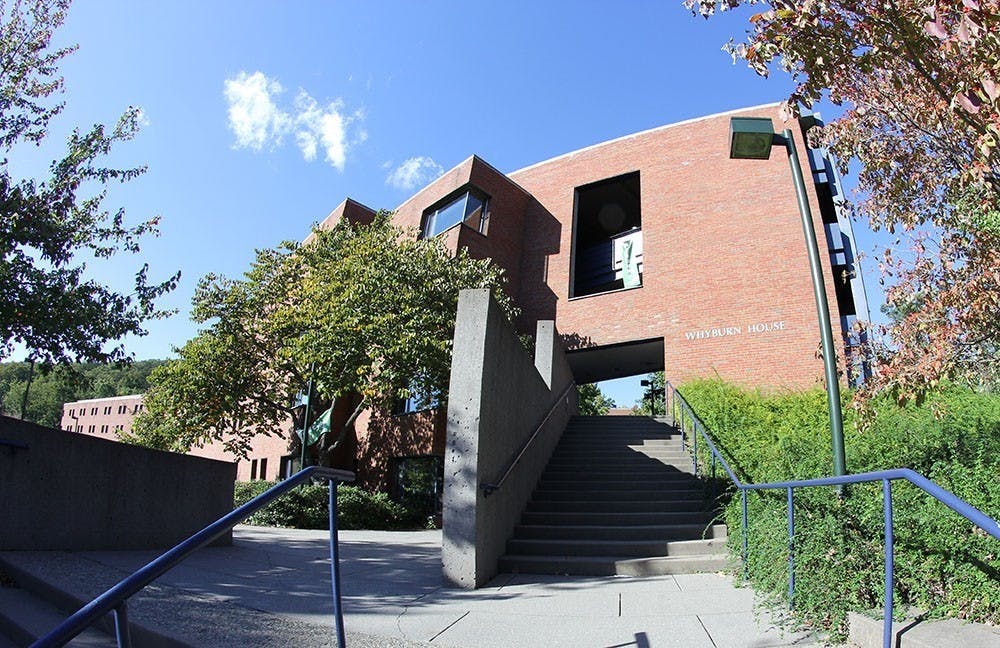In 1970, amid student discontent with President Richard Nixon’s decision to invade Cambodia, University President Edgar Shannon stood before the Lawn to rebuke American military policy in Southeast Asia, according to a March 1970 Cavalier Daily report. The speech followed earlier reluctance from Shannon to publicly condemn the administration, but it was nevertheless a moment of political courage — that month, Shannon came within one vote of dismissal by the Board of Visitors.
It took until 2013 for the University to name a dorm after Shannon. Decades earlier, the administration named a residential college after his successor, Frank Hereford Jr. The University’s fifth president, who served from 1974 to 1985, was either willfully naive or politically inept. Either of these traits disqualifies him from having a building named after him.
Hereford had some notable successes — for example, a lucrative capital campaign, increased enrollment of minority students and the establishment of an “Office of Afro-American Affairs.” Yet the failures of Hereford are incriminating. Until 1976, he remained in an all-white country club despite vocal opposition, misled students to get out of the 1975 Student Council’s Minority Affairs Open Forum, forced student journalists off-Grounds and considered the removal of Resident Advisor Bob Elkins for being gay.
The defense of buildings named after problematic historical figures usually rests on what was acceptable in their time. Because slavery, eugenics and segregation were once prominent, the defense goes, naming buildings after slaveholders, eugenicists or segregationists implicates their time, not ours. This is dubious reasoning, absolving nearly everyone of historical blame. But it is also disingenuous — no one applies it to the recent past. No one applies it to men like Hereford.
Like Jefferson’s slaveholding, first University President Edwin Alderman’s eugenicism and third University President Colgate Darden’s segregationism, several of Hereford’s policies were harmful in his own time but reverberate into the present. Unlike earlier presidents, however, Hereford represented an ideological step backward from his predecessor, who implemented coeducation, resigned his own Farmington Country Club membership and criticized the Nixon administration for “anti-intellectualism and growing militarism in the national government of the United States.”
By holding up Hereford as deserving of recognition, the University rewrites his legacy. This historical revisionism extends to the University’s official biography of Hereford, which ignores his conflicts with student journalists and Elkins but spuriously claims that his commitment “to increasing the number of African-American students and faculty… included resigning from Farmington Country Club when efforts to pressure the club to change bylaws prohibiting African-American membership failed.”
Despite Hereford’s stated opposition to resigning “as a token,” he eventually resigned from Farmington with nothing to show for it — after years of aligning himself with racism. If Hereford was sincere in opposing both discrimination and tokenism, failing to effect change at Farmington was a profound failure of leadership. By honoring the dishonorable, the University falsely reconstructs moral failure as moral success.
Through his Farmington membership and prejudice against Elkins, Hereford condoned both racism and homophobia. Although it took the University until 1991 under President John Casteen III to add sexual orientation to its non-discrimination policy, continuing to name a dorm after Hereford is an affront to the principles of inclusion the University now claims to promote.
The Elkins case makes the name of Hereford Residential College particularly egregious. Gay and lesbian students — including RAs — have lived in Hereford dormitories for decades, and naming the college after Hereford excuses his homophobia. Although Elkins ultimately retained his position as RA, the conflict with Hereford effectively outed Elkins to his family and forced him to resign as president of the Gay Student Union. According to Elkins, the controversy put his personal life “into a shambles.”
Part of leadership lies in understanding the political climate, in anticipating change. As a matter of leadership, Hereford consistently failed to understand student discontent — around his Farmington membership, around his treatment of Elkins and around his inattention to minority student affairs. When Hereford and the Board of Visitors mandated the Media Board censor student media, the president again failed to anticipate political repercussions, and students hung Hereford in effigy on the Lawn.
The University still has substantial work to do in making building names more inclusive. Recent conversations around building names at the University have focused on buildings named after slaveholders, white supremacists and eugenicists — all from the distant past. But the University must also consider the recent past. Earlier presidents, particularly Alderman, are more problematic than Hereford. That does not exonerate Hereford. Failure to address one problem is not a reason to avoid addressing another.
There is precedent for renaming a residential college — what is now Brown College was named after President James Monroe until 1994, and Hereford Residential College opened as the New College in 1992. Naming a residential college after Hereford means bringing honor to his most problematic decisions. The University has evolved in the time since Hereford was president, but that does not excuse the harm he caused as president. Name Hereford Residential College after someone deserving of recognition — another president, another professor, a student — someone who did not remain in an all-white country club until 1976, attempt to censor student journalists or consider removing an RA for being gay.
Adam Grim is a Viewpoint Writer for The Cavalier Daily. He can be reached at opinion@cavalierdaily.com.
The opinions expressed in this column are not necessarily those of The Cavalier Daily. Columns represent the views of the authors alone.







